The World Trade Center – commonly known by its acronym WTC – is a large complex of modern office towers in Lower Manhattan. It is located at the site of the original WTC complex that included the iconic Twin Towers, which were destroyed on September, 11, 2001 by a terrorist attack.
The new complex also includes a spectacular modern transit hub and the 9/11 Memorial site and museum. Another attraction is the observatory at the top of One WTC – the tallest skyscraper in the United States.
History
The Twin Towers

The World Trade Center was a project started up in 1960 by David Rockefeller and originally consisted of two towers that were known as the Twin Towers. The towers were sometimes nicknamed David and Nelson, after the Rockefeller brothers. The design came from Minoru Yamasaki and Emery Roth & Sons. The tallest of the two towers was the north tower (1 WTC), which reached a height of 1,368 feet (417 meters) and featured 110 floors. The south tower (2 WTC) measured slightly shorter at 1,362 feet or about 415 meters. 1 WTC was completed in 1972, followed one year later by 2 WTC. One World Trade Center was the tallest building in the world until 1974, when the Willis Tower was built in Chicago.
The Twin Towers made a huge impact on the skyline of Lower Manhattan. While the monolithic towers never received much love for their architecture, they were an iconic feature in the Manhattan Skyline.
The main attraction of the Twin Towers was the observatory at the top of the south tower, which offered expansive views over Manhattan and the harbor. It was even possible to access the roof for completely unobstructed views. The north tower featured a restaurant called ‘Windows on the World’ on the 107th floor.
Expansion
Several more, smaller buildings were added to the complex in the 1970s, and the last building – the 47-story red granite 7 WTC building – was added in 1987 to bring the total number of buildings in the complex to seven.
Terrorist attacks
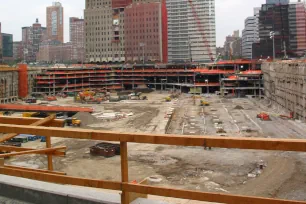
The Twin Towers became world news when, on February 23, 1993, a bomb exploded in the World Trade Center. The explosion killed 6 and wounded at least 1,000 people. Muslim fundamentalists have been convicted for the bombing.
The second time the WTC became world news was on the tragic day September 11, 2001, when two hijacked planes crashed into the twin towers. Soon after the impact, the towers imploded. Almost 3,000 people died in this terrorist attack. The site of the towers – a gaping wound – became known as ‘ground zero’ until it was transformed into a memorial site for the victims of the attack. The other buildings of the World Trade Center were damaged in the attack and were later demolished.
A New World Trade Center
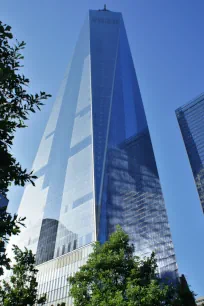
Plans to build a new World Trade Center were launched shortly after the destruction of the original WTC Towers. In 2003 the Polish-American architect Daniel Liebeskind created a master plan for the complex. Instead of rebuilding the Twin Towers, it was decided to create a memorial at the site and build five new towers around it. The first tower – 7 WTC – was completed as early as in 2006. The tallest building – 1 WTC – was completed eight years later and is now the tallest building in the United States.
The Buildings
1 WTC
The tallest building, known as One World Trade Center or 1 WTC, is the centerpiece of the new World Trade Center. It was built between 2006 and 2014 on the site of the former 6 WTC, just north of the former Twin Towers. The 94-story glass-clad skyscraper was designed by the American architect David Childs.
The roof of the tower is at a height of 1,368 feet (417 meters) – exactly the height of the original 1 WTC tower – but a tall spire was installed on top of the roof to increase its total height to a symbolic 1,776 ft or about 541.3 meters. This height refers to the year the United States gained its independence: 1776.
3 WTC
On the east side of the World Trade Center complex stands 3 WTC. This 80-story tower was built between 2010 and 2018 after a design by RSHP, a British architectural firm. The building has a height of 1,079 feet (329 meters).
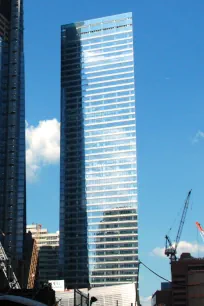
4 WTC
Just south of 3 WTC stands 4 WTC, a 74-story skyscraper which opened in 2013 after a five-year construction. It was designed by the Japanese architect Fumihiko Maki and features a reflective glass curtain-wall facade.
7 WTC
The first tower of the new World Trade Center complex that was completed was 7 WTC, which opened as early as in 2006. It was designed by David Childs – the architect of 1 WTC – and features a floor plan in the shape of a parallelogram. The tower has 52 floors and reaches a height of 743 feet (226 meters).
More towers
There are two more towers planned for the new World Trade Center: 2 WTC and 5 WTC. These towers are expected to open around 2027-2028.
Oculus
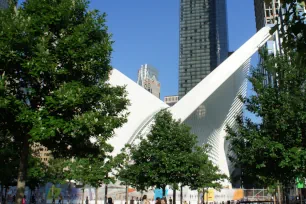

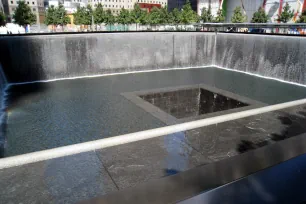
As early as in 2003, a new transit hub was planned as part of the new World Trade Center complex to replace the original subway station that was damaged during the attacks on September 11, 2001. This station connects Manhattan with New Jersey across the Hudson River by means of rapid trains operated by PATH (Port Authority Trans-Hudson).
The eye-catching centerpiece of this new transit hub is the Oculus, the main station house for the PATH station. It was conceived by Spanish architect Santiago Calatrava as a 21st-century answer to the 20th-century Grand Central Terminal. It was designed in Calatrava’s typical style with soaring white curved pillars that span a central court which is flooded with natural light. From outside, it looks like a giant white bird spreading its wings.
The station leads to four platforms of the PATH network, and it also gives access to no less than twelve subway lines.
9/11 Memorial
Exactly ten years after the terror attack that destroyed the original World Trade Center complex, a memorial was unveiled to commemorate the almost 3,000 victims of the attack. The memorial, dubbed «Reflecting Absence», features cascading waterfalls with illuminated reflecting pools that have the exact shape and location of the former Twin Towers. The memorial’s design by architect Michael Arad and landscape architect Peter Walker was chosen during a competition which attracted more than 5,200 submissions.
One World Observatory

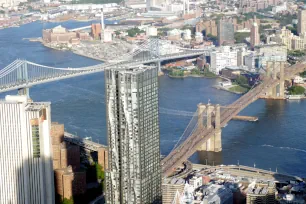
On May 29, 2015, a new observatory opened in the newly built 1 WTC tower. Known as One World Observatory, the observation deck – the highest in New York – occupies floors 100 to 102, from where you have a spectacular 360 degree view over Manhattan, the harbor and beyond. There is also a restaurant, called One Dine and a bar, called One Mix, with equally panoramic views over the city.
Liberty Park
Finally, the new World Trade Center also features an elevated public park on the south side of the complex that overlooks the 9/11 Memorial. The small park opened in 2016. Its two main attractions are The Sphere and the St. Nicholas Church.

The Sphere is a 25-foot-tall (almost 8 m.) bronze sculpture that was created in 1971 by German artist Fritz Koenig. That same year, it was installed on the WTC plaza at the foot of the Twin Towers. The artwork was damaged during the 9/11 attacks but was salvaged and six months later, it was re-erected in Battery Park. In 2017, it was moved to its new permanent home in Liberty Park.
St. Nicholas Church is a Greek Orthodox Church that was originally built in 1922 by the Greek immigrant community. The modest building was destroyed on September 11, 2001. A new church, designed by Santiago Calatrava, opened in 2022 on the grounds of Liberty Park.

